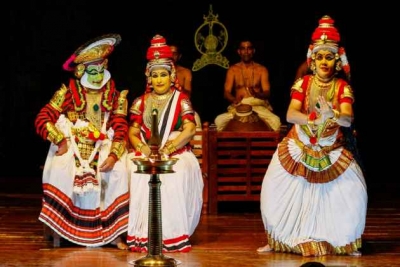
Koodiyattam is considered the mother of Kathakali, and also the greatest form of Sanskrit theatre that led to the development of the dramatic and form of Kerala. Koodiyattam literally means dancing together and is also based on the ‘sastras’, and the language of hand gestures is derived from Hasta Laksha Deepika and is the original form of dance drama and theatre. Kathakali is considered the refined and decorated form of Koodiyattam that portrays stories of Hindu mythology in a dramatized form. While the costume and make-up of Koodiyattam is comparatively simpler, Kathakali moves forward with stylised make-up and costumes that changes according to the character portrayed.
Inscriptions related to the dramatized dance worship services known as Koothu are available in temples at Tanjore, Tiruvidaimaruthur, Vedaranyam, Tiruvarur, and Omampuliyur. They were treated as an integral part of worship services alongside the singing of tevaram and prabandam hymns. There are mentions in epigraphs those forms of Koothu that are called aariyam when they use languages other than Tamil such as Sanskrit, Pali or Prakrit for plays.
Picture Credit : Google

